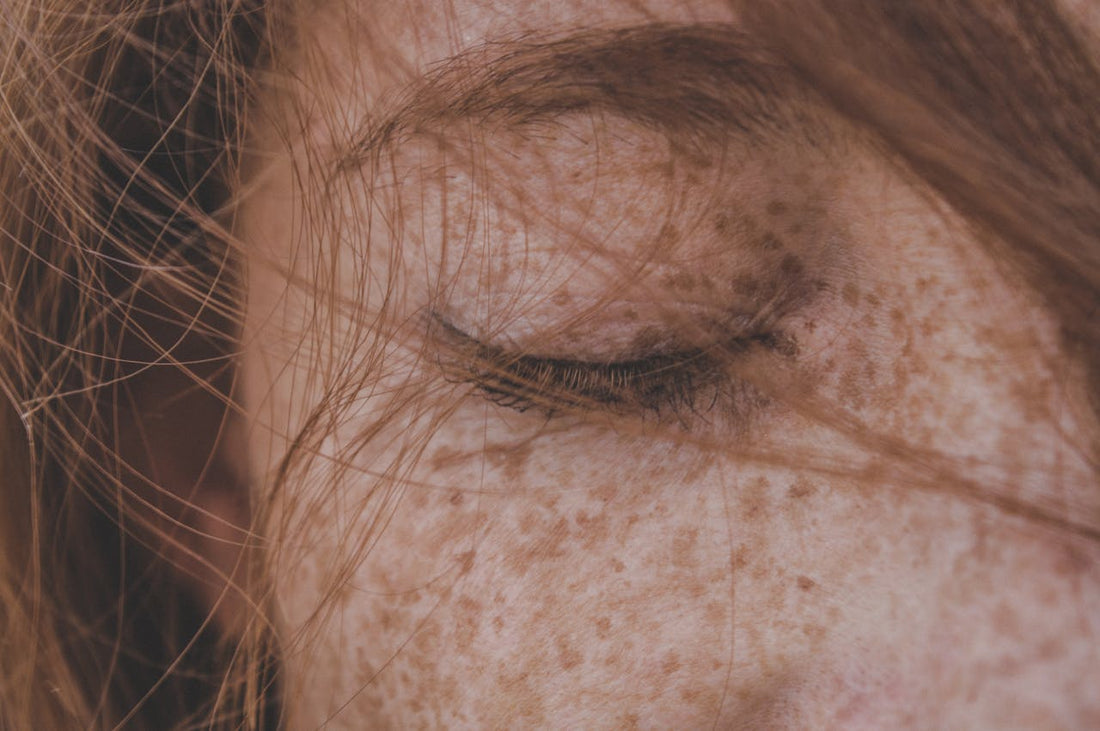
What to Do with Under the Skin Pimples?
Share
Under-the-skin pimples, also known as blind pimples, are painful, inflamed breakouts that form deep beneath the surface. Unlike regular pimples that develop a visible whitehead, these stay trapped under the skin, causing discomfort and swelling. If not treated properly, they can last for weeks and may even lead to scarring. So, what can you do to get rid of them effectively? Let’s dive into the best ways to treat and prevent under-the-skin pimples.
What Causes Under-the-Skin Pimples?
Blind pimples form when oil, dead skin cells, and bacteria clog the pores. Unlike surface-level acne, they develop deep within the skin layers, making them difficult to pop or treat externally. Hormonal fluctuations, stress, poor skincare routines, and diet can also contribute to their occurrence. If you often get deep cystic pimples, it may be a sign of an underlying issue like hormonal imbalances or excessive sebum production.
How to Treat Under-the-Skin Pimples at Home
1. Apply a Warm Compress
A warm compress helps reduce swelling and opens up the pores, allowing the pimple to drain naturally. Soak a clean cloth in warm water, wring out the excess, and place it on the affected area for 10-15 minutes, three times a day. This promotes healing and relieves pain.
2. Use an Ice Pack
If the pimple is swollen and painful, ice can help reduce inflammation. Wrap an ice cube in a clean cloth and apply it to the area for a few minutes. This soothes redness, tightens pores, and numbs the pain.
3. Apply a Spot Treatment
Look for treatments containing benzoyl peroxide, salicylic acid, or sulfur. These ingredients help kill bacteria, dry out excess oil, and prevent the pimple from worsening. Apply a thin layer to the affected area before bed and let it work overnight.
4. Avoid Touching or Popping
One of the worst things you can do is try to squeeze a blind pimple. Since it’s deep under the skin, popping it will only push the infection further inside, leading to more swelling and possible scarring. Instead, focus on reducing inflammation and allowing it to heal naturally.
5. Use Tea Tree Oil
Tea tree oil has natural antibacterial properties that help reduce inflammation. Dilute it with a carrier oil like jojoba or coconut oil and apply it to the pimple with a cotton swab. For optimal effects, use this medicine twice a day.
6. Try Over-the-Counter Pimple Patches
Hydrocolloid patches absorb excess fluid and speed up healing. These patches work well for surface-level pimples, but they can also help reduce inflammation in deep pimples by drawing out bacteria and impurities.
Preventing Future Breakouts
1. Keep Your Skin Clean
Cleanse your face twice a day with a gentle cleanser to remove dirt, oil, and bacteria. Steer clear of harsh scrubs, as they can irritate your skin and worsen acne. Opt for a cleanser with salicylic acid if you’re prone to breakouts.
2. Exfoliate Regularly
By eliminating dead skin cells, exfoliation helps to avoid clogged pores. Use a mild exfoliator once or twice a week to keep your skin clear. Avoid over-exfoliating, as this can damage the skin barrier and cause more breakouts.
3. Use Non-Comedogenic Skincare Products
Choose skincare and makeup products labeled as non-comedogenic, meaning they won’t clog pores. Heavy creams and oily foundations can contribute to acne, so opt for lightweight, oil-free formulas.
4. Maintain a Healthy Diet
Certain foods, like dairy and high-glycemic foods, can trigger acne in some people. Try to incorporate more fruits, vegetables, and whole grains into your diet while reducing sugar and processed foods.
5. Manage Stress
Breakouts may result from elevated cortisol levels brought on by stress. Use relaxation methods to lower stress, such as yoga, deep breathing, or meditation.
6. Change Your Pillowcases Regularly
Bacteria and oil can accumulate on pillowcases, transferring onto your skin and causing breakouts. Change your pillowcases at least twice a week to maintain clean skin.
Professional Treatments for Stubborn Under-the-Skin Pimples
If your blind pimples don’t go away or keep recurring, consider professional treatments:
- Cortisone Injections: A dermatologist can inject a small amount of cortisone to rapidly shrink an inflamed cystic pimple.
- Chemical Peels: Exfoliating peels help remove dead skin and unclog pores, preventing deep pimples from forming.
- Prescription Medications: If you have severe acne, your doctor may prescribe oral antibiotics, birth control pills, or retinoids to regulate oil production and clear your skin.
Fast-Acting Skincare Solutions from Skin Essential
For faster results, using high-quality skincare products is key. At Skin Essential, we offer powerful treatments designed to target deep pimples and prevent breakouts. Our Tretinoin Cream and Azelaic Acid Gel are excellent options for treating stubborn acne by promoting cell turnover and reducing inflammation. Hydroquinone Cream can also help fade acne scars and even out skin tone. Explore our full range of acne-fighting products at Skin Essential and achieve clear, healthy skin faster.
Taking care of under-the-skin pimples requires patience and the right skincare routine. By following these tips and using the best treatments available, you can prevent painful breakouts and keep your skin looking its best.
